Abstract
OBJECTIVES. The purpose of the study was to determine the clinical and economic impact of alternative contraceptive methods. METHODS. Direct medical costs (method use, side effects, and unintended pregnancies) associated with 15 contraceptive methods were modeled from the perspectives of a private payer and a publicly funded program. Cost data were drawn from a national claims database and MediCal. The main outcome measures included 1-year and 5-year costs and number of pregnancies avoided compared with use of no contraceptive method. RESULTS. All 15 contraceptives were more effective and less costly than no method. Over 5 years, the copper-T IUD, vasectomy, the contraceptive implant, and the injectable contraceptive were the most cost-effective, saving $14,122, $13,899, $13,813, and $13,373, respectively, and preventing approximately the same number of pregnancies (4.2) per person. Because of their high failure rates, barrier methods, spermicides, withdrawal, and periodic abstinence were costly but still saved from $8933 to $12,239 over 5 years. Oral contraceptives fell between these groups, costing $1784 over 5 years, saving $12,879, and preventing 4.1 pregnancies. CONCLUSIONS. Contraceptives save health care resources by preventing unintended pregnancies. Up-front acquisition costs are inaccurate predictors of the total economic costs of competing contraceptive methods.
Full text
PDF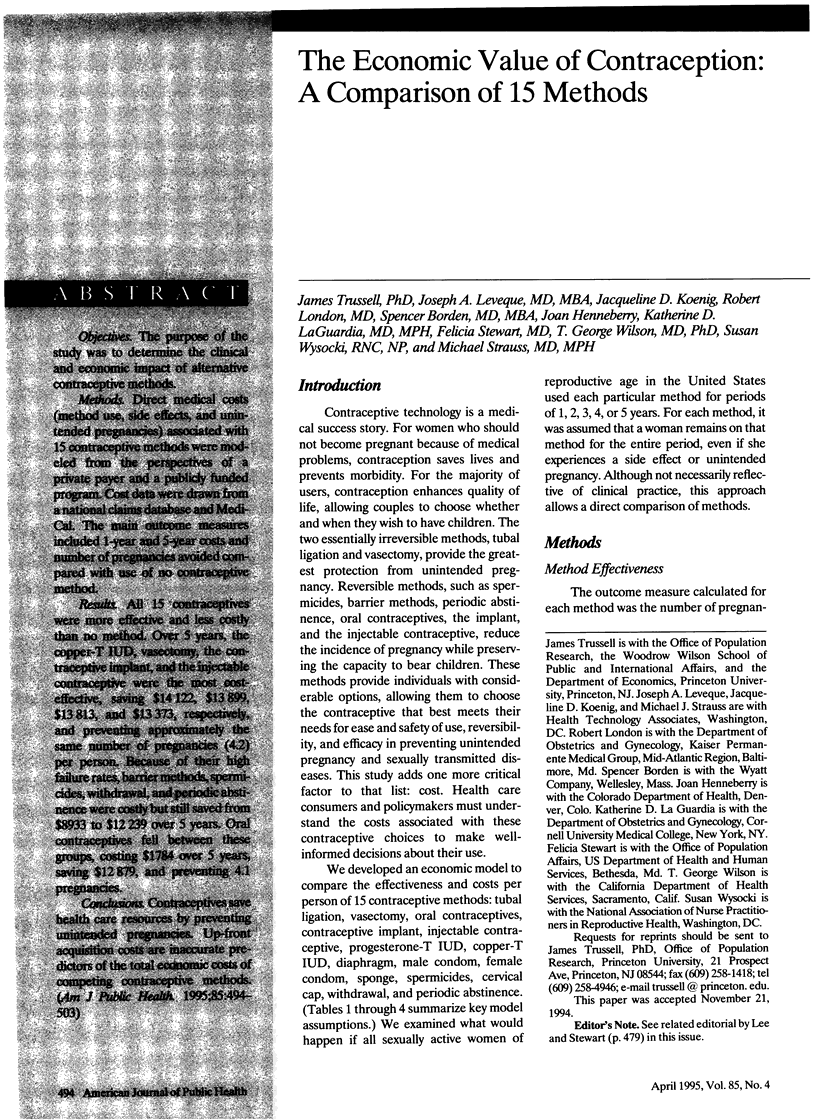
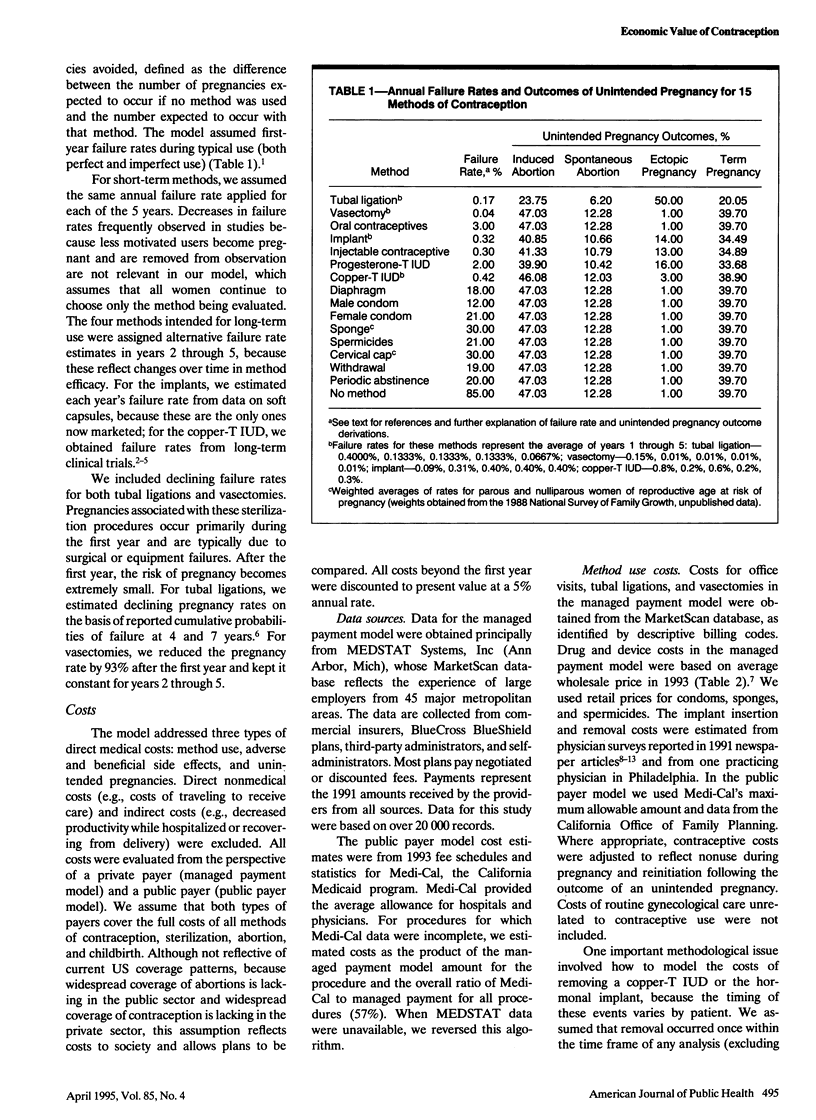


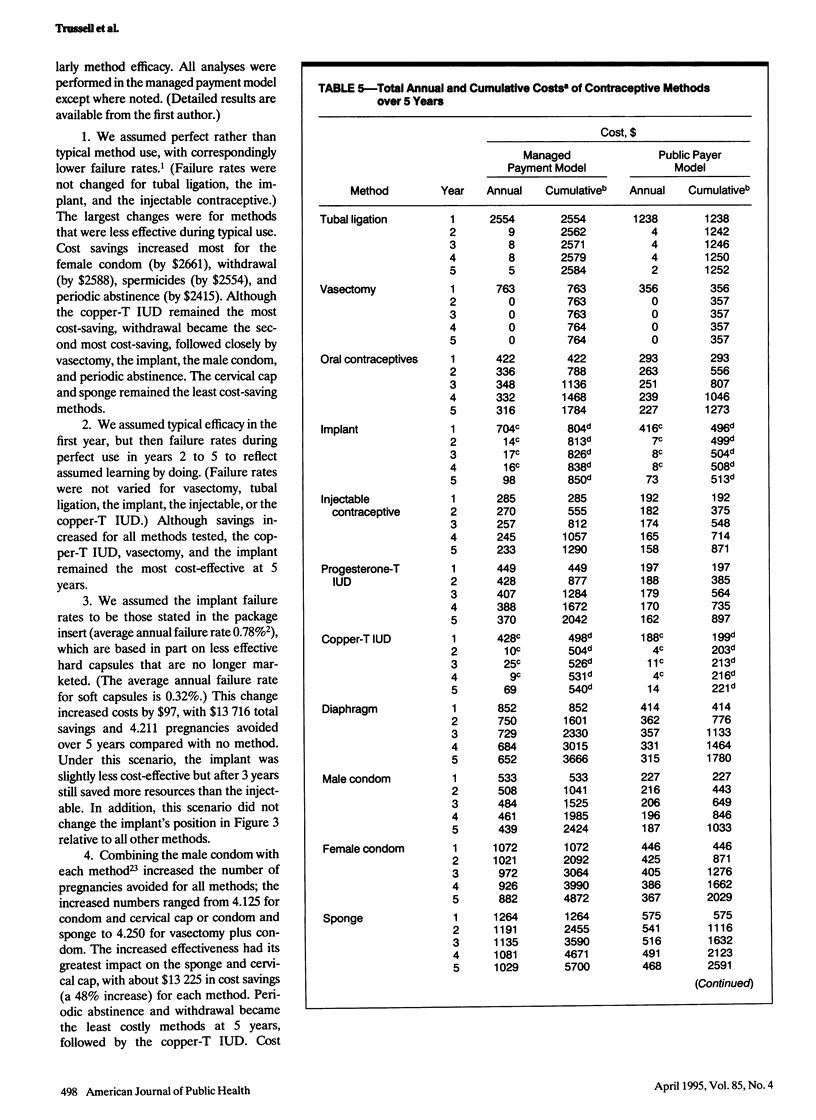



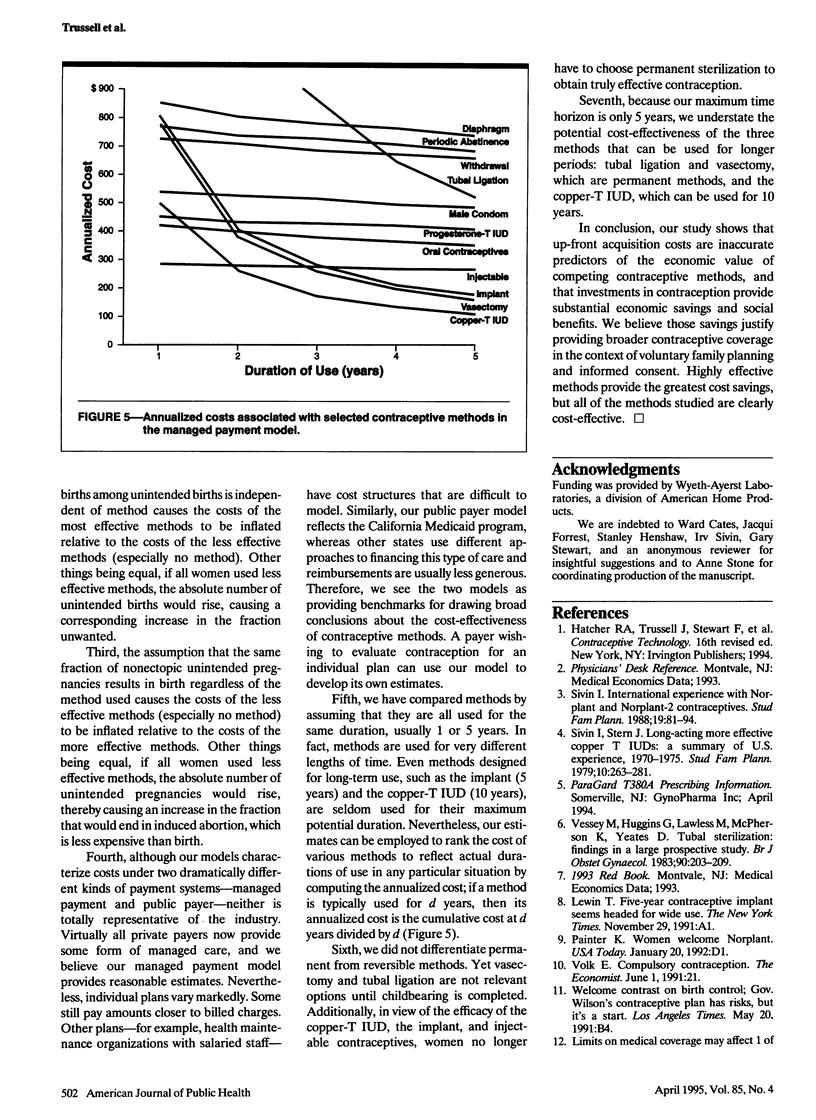
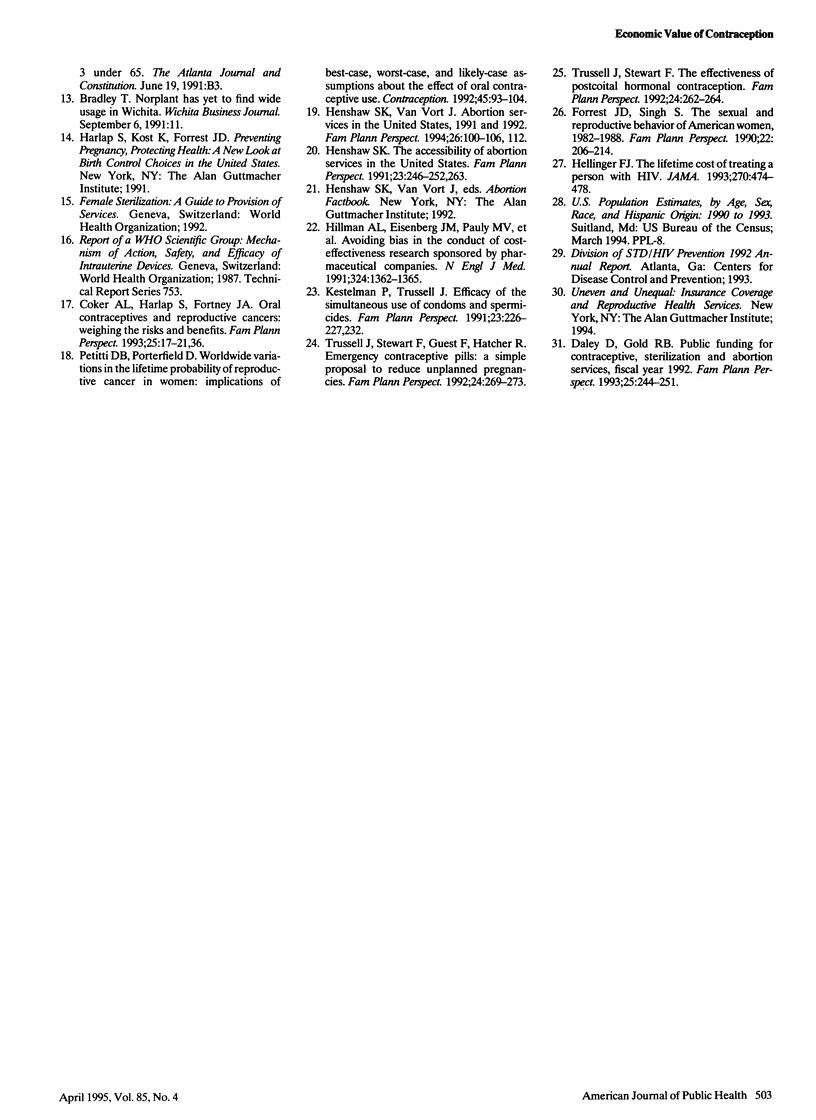
Images in this article
Selected References
These references are in PubMed. This may not be the complete list of references from this article.
- Coker A. L., Harlap S., Fortney J. A. Oral contraceptives and reproductive cancers: weighing the risks and benefits. Fam Plann Perspect. 1993 Jan-Feb;25(1):17-21, 36. [PubMed] [Google Scholar]
- Daley D., Gold R. B. Public funding for contraceptive, sterilization and abortion services, fiscal year 1992. Fam Plann Perspect. 1993 Nov-Dec;25(6):244–251. [PubMed] [Google Scholar]
- Forrest J. D., Singh S. The sexual and reproductive behavior of American women, 1982-1988. Fam Plann Perspect. 1990 Sep-Oct;22(5):206–214. [PubMed] [Google Scholar]
- Hellinger F. J. The lifetime cost of treating a person with HIV. JAMA. 1993 Jul 28;270(4):474–478. [PubMed] [Google Scholar]
- Henshaw S. K. The accessibility of abortion services in the United States. Fam Plann Perspect. 1991 Nov-Dec;23(6):246-52, 263. [PubMed] [Google Scholar]
- Henshaw S. K., Van Vort J. Abortion services in the United States, 1991 and 1992. Fam Plann Perspect. 1994 May-Jun;26(3):100-6, 112. [PubMed] [Google Scholar]
- Hillman A. L., Eisenberg J. M., Pauly M. V., Bloom B. S., Glick H., Kinosian B., Schwartz J. S. Avoiding bias in the conduct and reporting of cost-effectiveness research sponsored by pharmaceutical companies. N Engl J Med. 1991 May 9;324(19):1362–1365. doi: 10.1056/NEJM199105093241911. [DOI] [PubMed] [Google Scholar]
- Kestelman P., Trussell J. Efficacy of the simultaneous use of condoms and spermicides. Fam Plann Perspect. 1991 Sep-Oct;23(5):226-7, 232. [PubMed] [Google Scholar]
- Petitti D. B., Porterfield D. Worldwide variations in the lifetime probability of reproductive cancer in women: implications of best-case, worst-case, and likely-case assumptions about the effect of oral contraceptive use. Contraception. 1992 Feb;45(2):93–104. doi: 10.1016/0010-7824(92)90043-s. [DOI] [PubMed] [Google Scholar]
- Sivin I. International experience with NORPLANT and NORPLANT-2 contraceptives. Stud Fam Plann. 1988 Mar-Apr;19(2):81–94. [PubMed] [Google Scholar]
- Sivin I., Stern J. Long-acting, more effective copper T IUDs: a summary of U.S. experience, 1970-75. Stud Fam Plann. 1979 Oct;10(10):263–281. [PubMed] [Google Scholar]
- Trussell J., Stewart F., Guest F., Hatcher R. A. Emergency contraceptive pills: a simple proposal to reduce unintended pregnancies. Fam Plann Perspect. 1992 Nov-Dec;24(6):269–273. [PubMed] [Google Scholar]
- Trussell J., Stewart F. The effectiveness of postcoital hormonal contraception. Fam Plann Perspect. 1992 Nov-Dec;24(6):262–264. [PubMed] [Google Scholar]
- Vessey M., Huggins G., Lawless M., McPherson K., Yeates D. Tubal sterilization: findings in a large prospective study. Br J Obstet Gynaecol. 1983 Mar;90(3):203–209. doi: 10.1111/j.1471-0528.1983.tb08609.x. [DOI] [PubMed] [Google Scholar]




